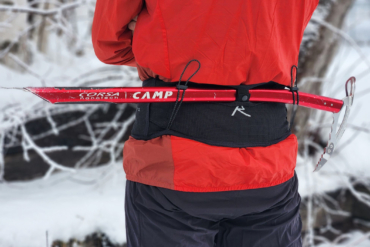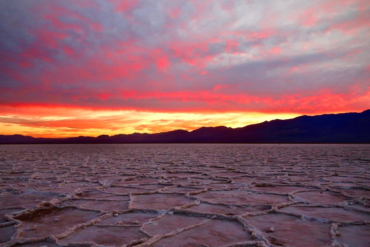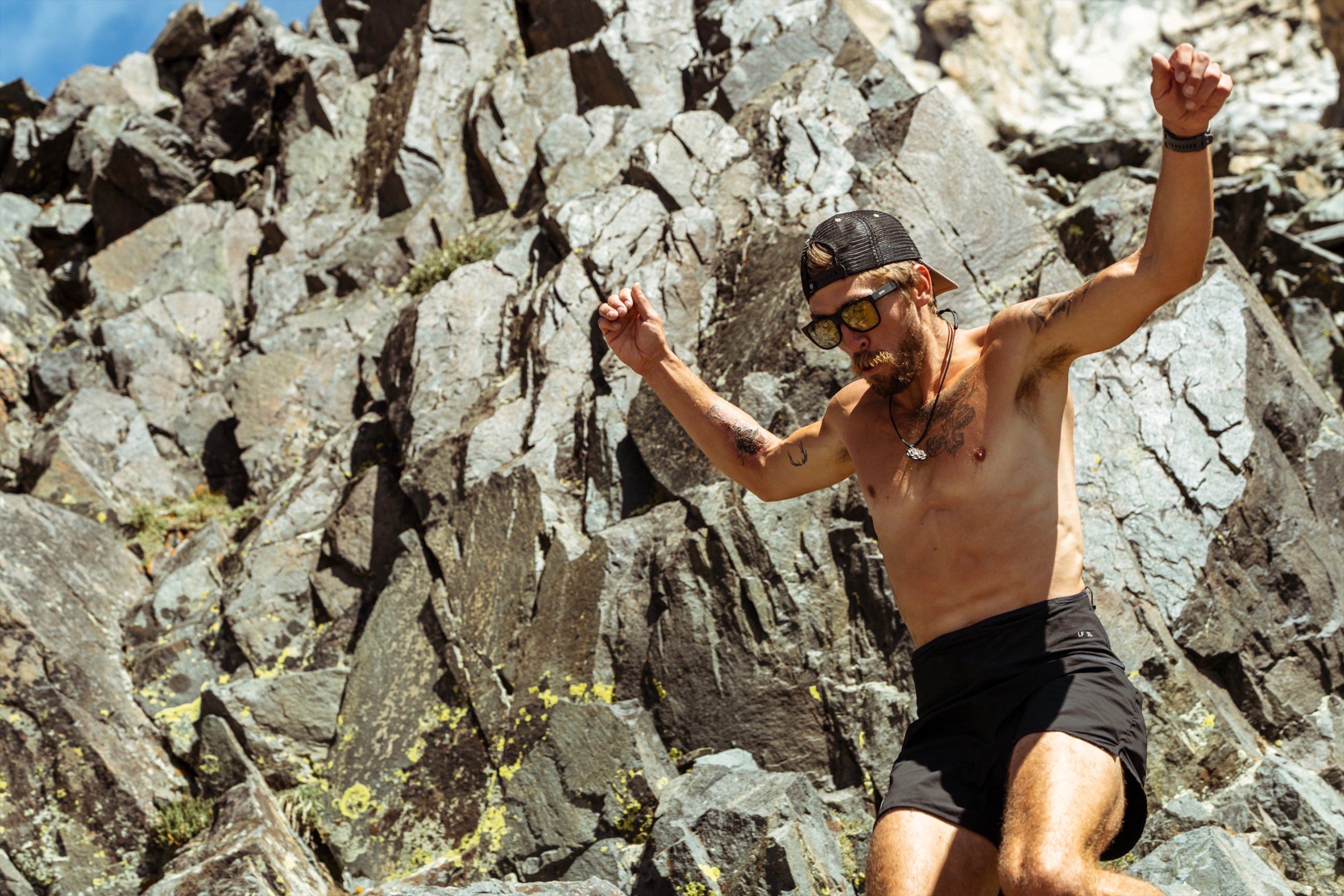Adventure racer Chelsey Magness and Team Bend Racing/YogaSlackers won the Patagonian Expedition Race last month. She shares what it’s like to race for 7 brutal days across one of the wildest places on Earth.
GearJunkie has a long connection with the Patagonian Expedition Race, a semi-annual endurance event held in the deep wilds near the tip of South America in Chile.
Our publisher and founder completed the course twice (2010 and 2011) as part of Team YogaSlackers. This year, contributors Jason and Chelsey Magness, along with teammates Lars Bukkehave and Alexandre Provost, returned with Team Bend Racing/YogaSlackers to face the Last Wild Race.

From November 17 to 30, teams from around the world headed to Chile, each with high hopes of winning this iconic expedition race. Covering 600 km of rugged terrain, the coed teams of four had to navigate the fastest course while trekking, biking, and paddling.
With years of adventure racing around the globe under their belt, Team Bend Racing/YogaSlackers crossed the finish line in 6 days, 4 hours, and 23 minutes. Of the 11 teams that began the race, they finished first.
Patagonia Expedition Race Champion Interview
After some much-needed recuperation and time with her son, we caught up with Chelsey Magness. She told us about the wild effects of sleep deprivation, what it took to come out victorious, and why it’s important to continue racing as a mom.

Q: What is the Patagonian Expedition Race?
Magness: The Patagonian Expedition Race takes place in the Patagonian region of Chile. The course is open for 10 days, and many years even the top teams take nearly this long to complete the race. In most years it has a 30 percent finishing rate, and regularly it forces even the world’s most experienced adventure racers to drop out.
The first edition was held in 2002, and the 2018 event marked the 13th edition. It is the longest-running expedition race (and often considered the hardest) in the world. Known as “The Last Wild Race,” it demands that participants cross vast areas of unexplored wilderness and test their personal limits, both physically and mentally.
Q: You and your husband (and racing partner) Jason have a history with the race. Can you tell us about it? Why is this race special to you?
Magness: Yes, Jason and I have a very strong tie to this race. After our first year racing it in 2010, he proposed to me on the podium. In 2011 we raced as a newly married couple. In 2016 we decided to start a family, and Jason’s damaged hip failed in the middle of a remote mountain pass. We had to carry him out.
In 2018 we returned to race as new parents, and to put Jason’s new hip to the ultimate test. In more ways than one, this race, the weather, and the raw beauty that is Patagonia have shaped our relationship, our connection to our team, and our perspective on life in general. Every time we go down there, we feel like we shed unnecessary layers of ourselves. The relentless wind and weather are like a scouring pad for the soul, tearing away everything but the core.
We come back feeling beaten down and humble, but at the same time refreshed and innocent. It is a wonderful dichotomy. This race is very special to us because we feel like it has helped us grow as people, as teammates, as lovers, and as parents.
Expedition races, in general, have a way of testing your known limits. This race just takes it a few steps beyond and tests every known piece of you. This time around, we also connected to our son who left us at birth in a big way. We saw him in the rainbows and felt him in the wind. It was a very healing experience for both Jason and me to be out there in nature with him for so long.

Q: What stage was the hardest for your team?
Magness: Every stage of the race had its moments. But the scariest one for our team was only 20 hours into the race, during the first trekking stage. At 1 a.m., we were trying to get up and over the last of three mountain passes as fast as we could. It was dark, and the winds were so extreme that communication was impossible from even a few feet apart.
Navigating in the terrain without daylight perspective was very difficult. We climbed up above and to the side of the pass without realizing it. At that point, we were way too high to go down, and it was getting really icy. The wind had picked up and was blowing ice chunks and small rocks into our faces.
Our hands and feet were becoming numb in our lightweight race shoes and soaked gloves. Our only safe option at that point was to traverse over to the pass and down the other side. I made the mistake of looking down, and kind of freaked out and froze. Luckily, my teammates were all close enough to calm me down. They assured me that I was fully capable. All I had to do was stay close and not look down again.
I took a solid breath in and put all my attention on doing exactly what Alex was doing right in front of me. Once on the other side, we made our way straight up. Then, just as I was cresting the top of the pass, I was literally almost blown off the top by the biggest gust of wind I had ever felt. Alex and Lars quickly grabbed a hold of me, and we all stayed that way with arms linked until we had gotten down a good way on the other side. Once we were well off the top, we started to hoot, holler, and prance all the way down the mountain in knee-deep snow. It was terrifying but invigorating at the same time.

Q: Which was the easiest?
Magness: The easiest stages for us as a team were probably the biking stages, as we are a very strong biking team. The longest ride also had the wind at our back for nearly 50 km. That 50 km took us barely over an hour, and we hardly pedaled. Of course, then the route turned nearly 180 degrees, and we had to finish the leg with 30 km straight into the wind. That 30 km took us three hours. So maybe it was not the easiest. Patagonia has no “easy,” really.
Q: Sleep deprivation can lead to some crazy moments. Any good sleep monster stories?
Magness: In 6 days, 4 hours, and 23 minutes, we only got 12 and a half hours of sleep. For the average person, this seems insane. However, in the adventure racing world, we look at it like, “Wow, we got a lot of sleep!” So while we usually do get a lot of “sleep monsters” — when your mind plays tricks on you and trees turn into dragons, rocks become broken-down washing machines, or suddenly your grandma is telling you to take the muffins out of the oven before they burn — in this race, we actually didn’t really “see” anything out of the ordinary.
But the sleep monsters did strike in other ways. Jason fell asleep midsentence with the compass in his hand as we were scouting out the next route choice from a good vista. And Lars also had some crazy moments. Navigation toward the end of the third trek, at a crucial summit approach, he suddenly turned the wrong way completely and started heading up the wrong mountain. He was furious when we questioned him, despite the fact that moments before we had just stopped and all looked at our route and decided which way to head.

Then not even 20 seconds later, he made a complete 180 and started charging in the opposite direction. We all yelled at him to stop, but he insisted that he was right. It was not until we all demanded that he stop and look at the map that he finally realized that he had fallen asleep. Five minutes later, after having the exact same conversation, we were on our way again.
In the final leg, on our way to the win, we totally lost track of reality because of sleep deprivation. We wandered around back and forth in across the same 2 km of forest. It was like the Winnie the Pooh story where they keep trying to leave the forest and then find their own footprints again as they unknowingly loop back to where they started. That really happened to us. Several times.
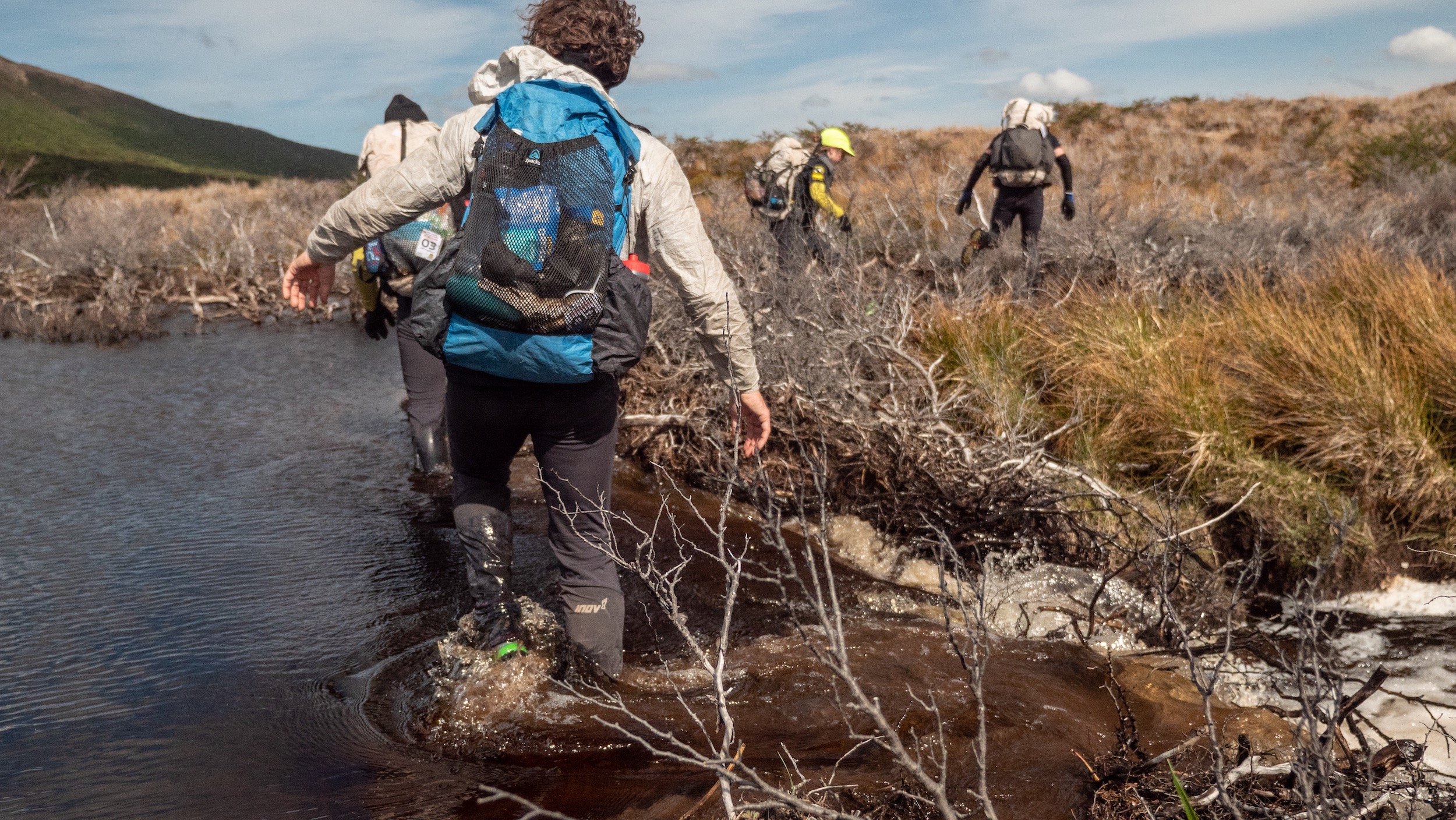
Q: Most people can’t imagine going to Patagonia, let alone racing through some of the most remote areas with only your teammates to rely on. What was that experience like? What makes Patagonia different than other places?
Magness: We feel incredibly lucky to be able to go to Patagonia and do this race. Throughout the race, whether it be in the middle of walking a ridge in 80mph winds, or trudging through “turbal” (also known as peat bog) for miles and miles with no sign of any other human as far as the eye can see, we often would look at each other and say, “Damn, we are so lucky.”
Unlike other races, where you are seeing other teams, roads, and buildings throughout the race, the Patagonian Expedition Race prides itself on getting people way, way out there. We were literally in the middle of nowhere for much of the race. The only way to the nearest road was 50 to 70 miles of trail-less vastness. In a world where you can get emails and service on the top of many mountains, it is so refreshing to go to a place where that is not possible. Where it is only you, your team, a map, and a compass.
The team dynamics either make or break teams out there. It is 100 percent the most fascinating part of the sport. Trust, compassion, and honesty are essential, and we had all three.
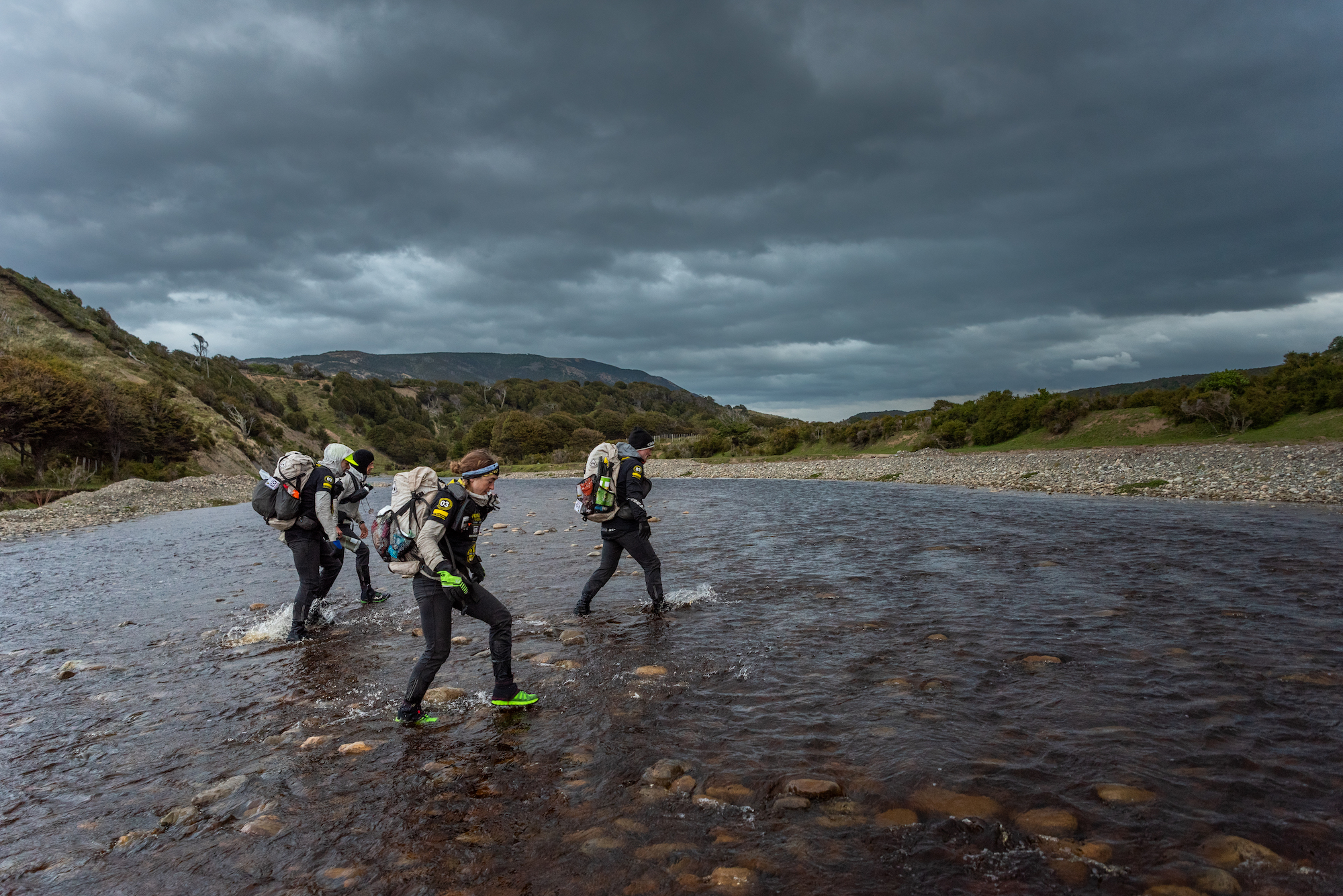
Q: What worked with your team and the race this time that made for a win?
Magness: This time around, it seemed like everything clicked and came together. Not to mention, Jason had a newly resurfaced hip. In 2016, our team had actually been leading the race for many days. We were 20 hours in the lead when Jason literally collapsed in the middle of a massive trekking leg because he was in so much pain. Alex and Daniel had to carry him out of the mountains.
We were heartbroken. But after Jason had surgery, and I gave birth to our twin boys (and lost one), we made it our goal to win this race. We knew that with everything we had gone through, this was our race and year to win. Alex also was excited and ready to have a little redemption with Patagonia.
Two months before we were to leave, our regular teammate Daniel decided he couldn’t race (his wife had just had a baby a few months before). So we called up Lars, who is an amazing racer that we’ve known for years. He said it would be an honor and immediately made his way to Patagonia to study the terrain.
Before starting the race, we had many team meetings. We were all on the same page: have fun, work as a team, and win. I am happy to report that we ticked off all our boxes!
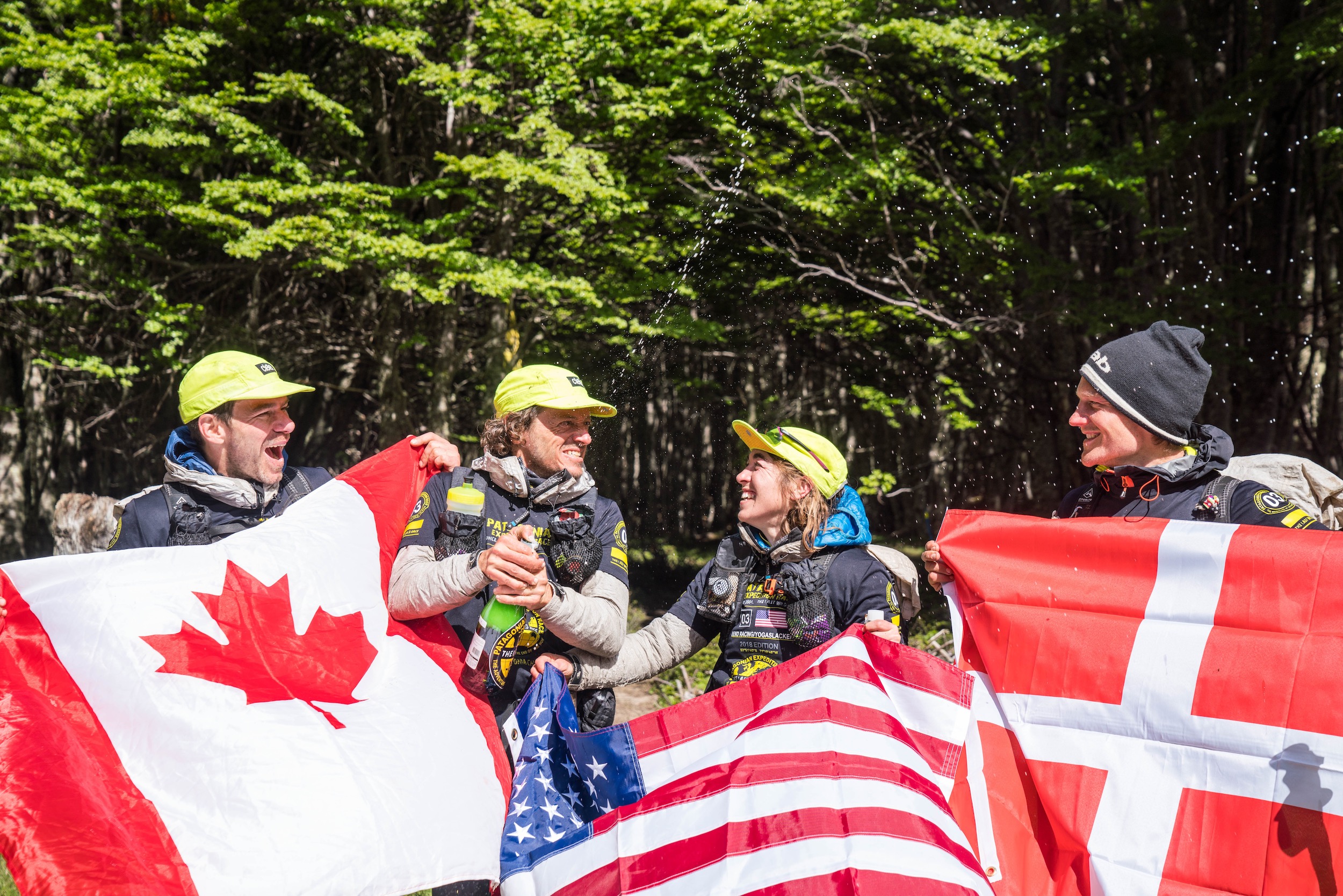
Q: How did it feel to win?
Magness: As we crossed the finish line, I was speechless and in awe of it all. We had finally (after six attempts over nine years) completed our goal of winning the Patagonian Expedition Race. After we doused each other with champagne and cider, the race director ushered us into the huge iconic Patagonia dome tent. There was a lot of silence and wild laughter as we all stuffed ourselves with pizza and more cider.
Then, one of our media guys gave me his phone. It was full of pictures of my son Max. I couldn’t help the tears from streaming down my cheeks. We had done it. It was real. And Max was totally fine and as happy as can be.
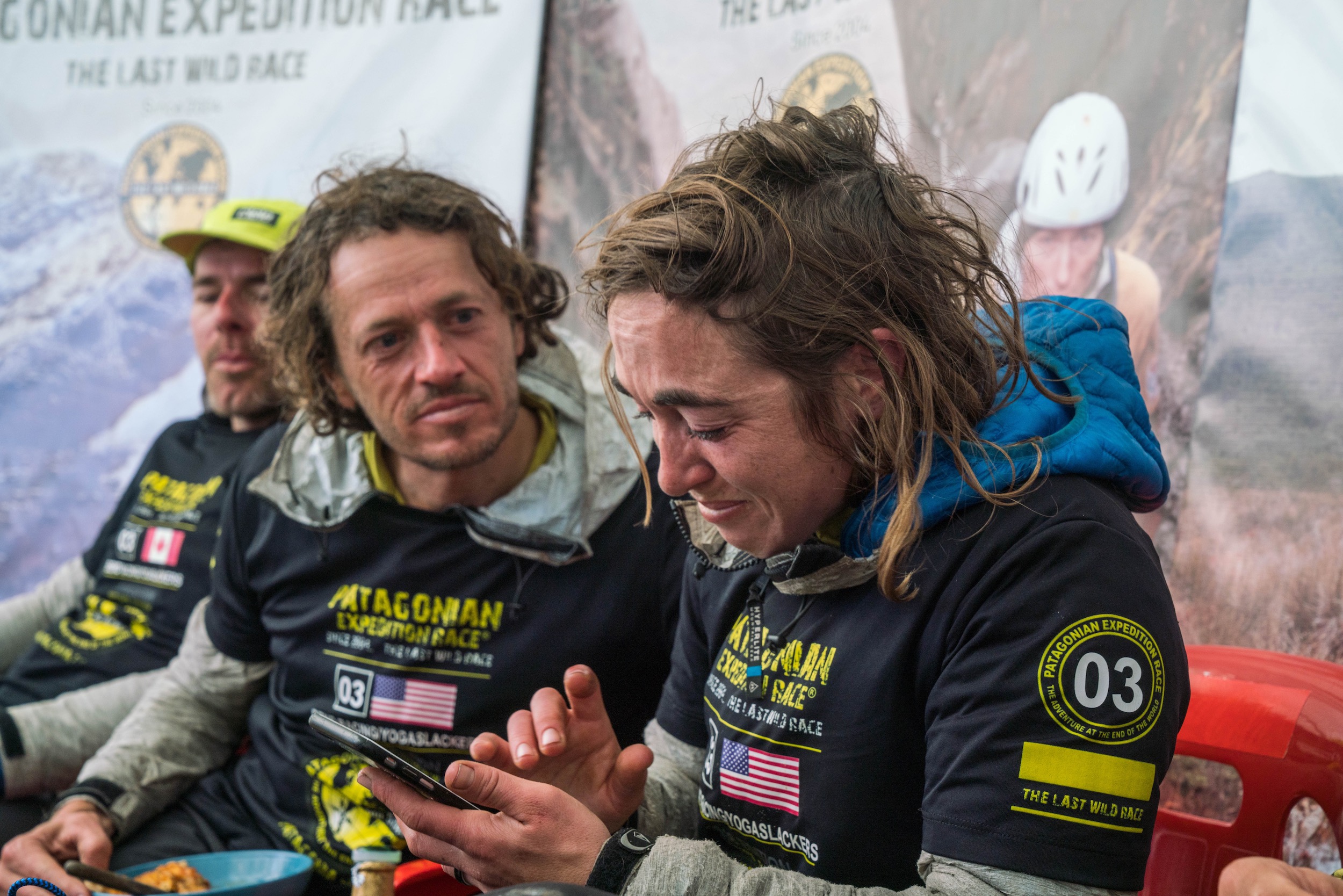
Q: What do you say to people who question your choice to compete as a new mom?
Magness: Since I began racing again at this level, many mothers have asked, “How can you leave your baby for so long?” And now, after winning the Patagonian Expedition Race, I have already heard, “Now that you’ve won, are you done? Are you satisfied?”
To these questions I respond:
Training and racing are my passions, and having kids does not change that. Instead, it has inspired me to further explore and expand my potential. Leaving Max is crazy hard. But we are very lucky to have an amazing support network of family and friends who love him dearly. It takes more than just a mama and a daddy to raise a child. And doing things that feed my soul makes me the best mother I can be. I hope by continuing to race I can inspire more mothers to live their passions!
And to the next question, I say no, I am not even close to done. I hope to continue racing and exploring for a long, long time.
Q: What are you doing now to recover from such an intense physical race?
Magness: After a race of this magnitude, we give ourselves about one week of recovery for every 24 hours of racing. For the first week, we laid around and ate as much as we wanted. And then as the second week came to a close, we started to get some feeling back in our feet and started to do some more active recovery.
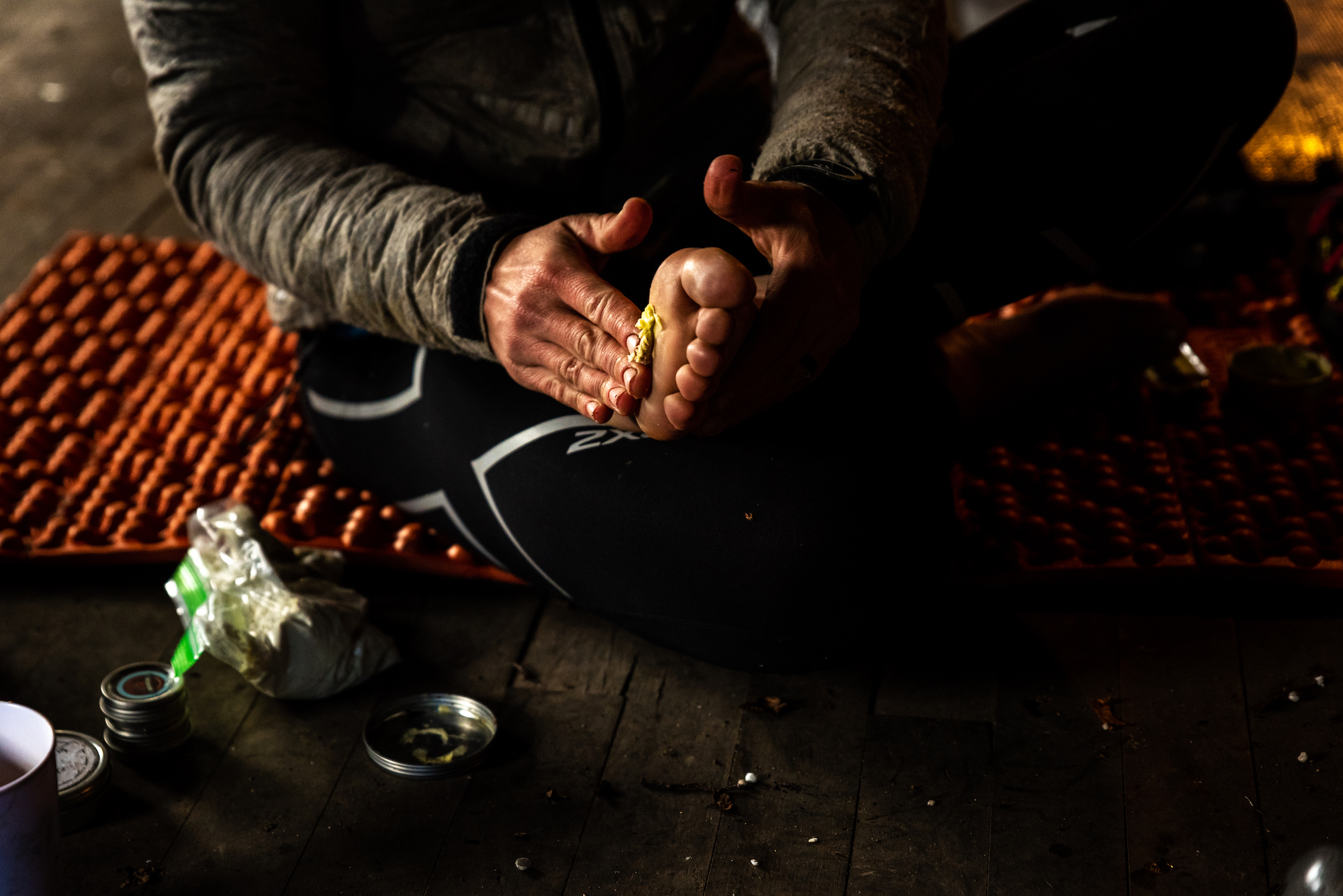
We go to physical therapy, go on light bike rides, walk a lot, and then sit in compression chairs. Jason and I are very lucky to be sponsored by an amazing physical therapy office, a recovery center, and a chiropractor here in Bend. We are seeing all of them as much as possible now. We are also taking this time to really enjoy the holidays and play with our 2-year-old son.
Q: What’s next on the docket for the team?
Magness: The next big race for our team is GODZone, which takes place in New Zealand in March of [2019]. Then, Jason and I put on Expedition Oregon and then (hopefully) the Eco-Challenge Fiji in September.

Q: Anything else you want to say before we wrap it up?
Magness: I’d love to give a huge thanks to GearJunkie and Stephen Regenold for being a big part of our team. And we couldn’t make it through such an intense physical pursuit without all the awesome gear. So we have to thank the brands that have supported us with gear and pro deals to help make this possible: Leki, NiteIze, Inov-8, Hyperlite Mountain Gear, Petzl, Ellsworth Bikes, Kahtoola, Ciele, Rebound, Recharge, Wigwam, Picky Bars, REI, Angelin’s Organic Skincare, Joshua Tree Skin Care, and Rogue Panda Designs.







